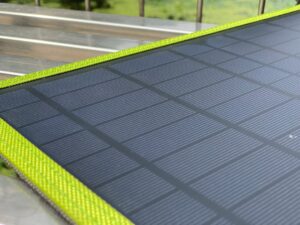The integrity of a home’s foundation is paramount to its overall stability and longevity. Poor drainage can have a profound impact on this critical aspect of a house. When water accumulates around the foundation due to inadequate drainage systems, it can lead to a host of problems, including soil erosion, settling, and even structural damage.
The weight of excess water can cause the soil to expand and contract, leading to cracks in the foundation walls and floors. Over time, these issues can escalate, resulting in costly repairs and potentially compromising the safety of the home. Moreover, the effects of poor drainage extend beyond just the foundation itself.
Water pooling around the base of a house can create an environment conducive to mold growth and pest infestations. This not only poses health risks to the inhabitants but can also lead to further deterioration of building materials. Understanding the impact of poor drainage is crucial for homeowners, as it emphasizes the importance of proactive measures to protect their property from water-related damage.
Key Takeaways
- Poor drainage can lead to foundation damage by causing soil erosion and excessive moisture around the foundation.
- Signs of poor drainage around your home include water pooling, cracks in the foundation, and mold growth.
- Effective drainage solutions for preventing foundation damage include installing proper gutters, downspouts, and French drains.
- Proper grading and sloping of the landscape can help direct water away from the foundation and prevent water accumulation.
- Installing gutters and downspouts can redirect water away from the foundation and prevent water damage.
Signs of Poor Drainage Around Your Home
Homeowners should be vigilant in recognizing the signs of poor drainage around their properties. One of the most common indicators is the presence of standing water in the yard after heavy rainfall. This stagnant water can signal that the ground is unable to absorb moisture effectively, which may lead to further complications if left unaddressed.
Additionally, water pooling near the foundation can create an immediate risk for structural damage, making it essential for homeowners to take action. Another telltale sign of poor drainage is the appearance of cracks in walls or floors, particularly in basements or crawl spaces. These cracks often indicate that water has infiltrated the foundation, causing it to shift or settle unevenly.
Homeowners may also notice damp spots or mold growth in areas where moisture has accumulated, which can pose serious health risks. By being aware of these signs, homeowners can take timely action to mitigate potential damage and safeguard their homes.
Effective Drainage Solutions for Preventing Foundation Damage

To prevent foundation damage caused by poor drainage, homeowners must consider implementing effective drainage solutions. One of the most straightforward approaches is to ensure that gutters and downspouts are functioning properly. Regular maintenance of these systems can help direct rainwater away from the foundation, reducing the risk of water accumulation.
Homeowners should also inspect their gutters for clogs and ensure that downspouts extend at least five feet away from the house. In addition to maintaining gutters, homeowners may want to explore more advanced drainage solutions such as installing French drains or surface drains. French drains consist of perforated pipes buried in gravel that collect and redirect excess water away from the foundation.
Surface drains, on the other hand, are designed to capture water runoff from driveways and patios, channeling it away from the home. By investing in these drainage solutions, homeowners can significantly reduce the risk of foundation damage and enhance the overall health of their property.
Importance of Proper Grading and Sloping
| Importance of Proper Grading and Sloping |
|---|
| Prevents water accumulation |
| Reduces erosion |
| Improves drainage |
| Enhances landscaping |
| Prevents foundation damage |
Proper grading and sloping around a home are essential components of an effective drainage system. The ground should slope away from the foundation at a minimum grade of 2% to ensure that water flows away from the house rather than pooling near its base. This simple yet effective technique can prevent many drainage-related issues before they arise.
Homeowners should assess their landscaping and make necessary adjustments to ensure that water is directed away from critical areas. In addition to preventing water accumulation, proper grading can also enhance the aesthetic appeal of a property. A well-graded yard not only looks more polished but also promotes healthy plant growth by ensuring that water reaches roots without becoming stagnant.
Homeowners who prioritize grading and sloping will find that they not only protect their foundations but also create a more inviting outdoor space.
Installing Gutters and Downspouts to Redirect Water
Gutters and downspouts play a crucial role in managing rainwater runoff and protecting a home’s foundation from potential damage. When installed correctly, gutters collect rainwater from the roof and channel it through downspouts, directing it away from the foundation. Homeowners should ensure that their gutters are adequately sized for their roof area and that they are free from debris that could obstruct water flow.
In addition to proper installation, homeowners should consider extending downspouts at least five to ten feet away from the foundation. This distance helps prevent water from pooling near the base of the house, significantly reducing the risk of foundation issues. Regular maintenance, including cleaning gutters and checking for leaks or damage, is essential for ensuring that these systems function effectively throughout the year.
Utilizing French Drains for Efficient Water Drainage

How French Drains Work
These systems consist of a trench filled with gravel or rock that contains a perforated pipe at its base. As water accumulates in the trench, it seeps through the gravel and into the pipe, which then directs it away from the foundation.
Benefits of French Drains
This method not only prevents water from pooling but also helps alleviate pressure on the foundation walls.
Installation and Maintenance
Installing a French drain requires careful planning and execution to ensure optimal performance. Homeowners should consider consulting with a professional to determine the best location for installation based on their property’s unique drainage patterns. Additionally, regular maintenance is necessary to keep French drains functioning effectively; this includes checking for clogs and ensuring that surrounding landscaping does not impede water flow.
Implementing Sump Pumps to Manage Excess Water
Sump pumps are another valuable tool for managing excess water and protecting a home’s foundation. These devices are typically installed in basements or crawl spaces and work by collecting water that accumulates in a sump basin. When water levels rise, the sump pump activates and pumps excess water out of the home, preventing flooding and reducing moisture levels.
Homeowners should consider installing a sump pump if they live in an area prone to heavy rainfall or if their property has a history of water intrusion. It is essential to choose a reliable sump pump with adequate capacity for the specific needs of the home. Regular maintenance, including testing the pump periodically and ensuring that discharge lines are clear, will help ensure that it operates effectively when needed most.
Regular Maintenance to Ensure Effective Drainage Systems
To maintain effective drainage systems and protect against foundation damage, regular maintenance is crucial. Homeowners should routinely inspect gutters, downspouts, French drains, and sump pumps for any signs of wear or obstruction. Cleaning gutters at least twice a year—more frequently if there are overhanging trees—can prevent clogs that lead to overflow and potential damage.
In addition to cleaning and inspections, homeowners should also be proactive about landscaping choices that affect drainage. Planting vegetation with deep root systems can help absorb excess moisture while maintaining proper grading around the property will ensure that water flows away from critical areas. By committing to regular maintenance and being vigilant about potential issues, homeowners can safeguard their foundations against the damaging effects of poor drainage for years to come.
If you’re looking to improve your home’s foundation, consider checking out this article on DIY faux finish techniques for walls. Proper drainage around the foundation is crucial for maintaining the structural integrity of your home, and this article offers tips on how to transform your space with style while also addressing potential drainage issues.
FAQs
What are the consequences of poor drainage around the foundation?
Poor drainage around the foundation can lead to water seepage into the basement or crawl space, which can cause structural damage, mold growth, and deterioration of the foundation.
How can poor drainage around the foundation be identified?
Signs of poor drainage around the foundation include standing water near the foundation, damp or wet basement walls, and cracks in the foundation.
What are some solutions for poor drainage around the foundation?
Solutions for poor drainage around the foundation include installing gutters and downspouts, grading the soil away from the foundation, and installing a French drain or other drainage system.
Why is it important to address poor drainage around the foundation?
Addressing poor drainage around the foundation is important to prevent water damage, mold growth, and structural issues that can compromise the integrity of the building.






